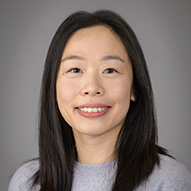Dallas
214-456-2382
Fax: 214-456-6133
Plano
469-303-4400
Fax: 469-303-4420
Referrals
Request an Appointment with codes: Cancer and Blood Disorders (CCBD)
Children with hemophilia have blood that doesn’t clot properly. The condition can cause excessive bleeding after minor injuries and serious joint problems. In extreme situations, the disease can be life-threatening.
Children’s Health is the only children’s hospital in North Texas designated as a comprehensive hemophilia treatment center (HTC) by the Centers for Disease Control and Prevention. This underscores our expertise caring for children with hemophilia, using the latest treatments to help them live full, active lives.
214-456-2382
Fax: 214-456-6133
469-303-4400
Fax: 469-303-4420
Request an Appointment with codes: Cancer and Blood Disorders (CCBD)
Hemophilia is a bleeding disorder that mostly affects boys (although girls can get it, too). The disease is usually inherited, which means it’s passed down from parent to child through their genes. Children with hemophilia have missing blood-clotting factors or clotting factors that don’t work well. Clotting factors are proteins the body needs to seal a wound, stop bleeding and promote healing.
A child with hemophilia may bleed uncontrollably and for a long time after an injury or surgery. Even minor scrapes or gashes from a fall off a bike can be cause for concern. Some children may start bleeding for no reason, for example having frequent nosebleeds.
The type of hemophilia a patient has is determined by which clotting factor they are missing. Hemophilia types include:
Hemophilia A happens when kids have little or no clotting factor VIII. Hemophilia A is the most common type (classic hemophilia).
Hemophilia B is the result of little or no clotting factor IX. Hemophilia B is sometimes called Christmas disease after Stephen Christmas, the first patient diagnosed with the disease in the early 1950s. It’s also known as royal disease because it affects royal families in England, Spain, Germany and Russia.
Hemophilia C is the result of little or no clotting factor XI. Hemophilia C is rare and doesn’t typically cause serious bleeding problems.
A child with hemophilia may have:
To diagnose hemophilia or another type of bleeding disorder, your child’s doctor will perform a physical examination, review your child’s medical records and learn about your family’s health history.
Your child may also get one or more of the following tests:
About two-thirds of children with hemophilia inherit a changed (mutated) gene from a parent. Other children with no family history of the disease may develop the mutations that cause hemophilia spontaneously in the womb or during childhood.
Hemophilia is a complex, lifelong condition. Hematologists (blood specialists) at our Bleeding Disorders Treatment Program see a high number of children with hemophilia every year and have deep experience treating kids with this condition. We create a custom treatment plan for each child, tailored to their unique needs. We offer the latest therapies, including clinical trials of innovative therapies available at select medical centers nationwide.
Hemophilia treatments include:
Our comprehensive hemophilia treatment center brings together top hematology (blood) specialists to help your child.





About 400 boys are born each year with hemophilia A, the most common type. It affects one in 5,000 births in America. Hemophilia B is less common, occurring in one in 25,000 American boys.
Hemophilia is rare in girls, but they can have the disease. Girls who are hemophilia carriers (which means they have one copy of the gene that causes hemophilia instead of two) may have mild symptoms. Teenage girls and young women with hemophilia may have unusually heavy periods, while pregnant women may be at serious risk for complications and blood loss during childbirth. Our Young Women’s Blood Disorders Program provides specialized care for women with hemophilia and other bleeding disorders.
Hemophilia symptoms may appear within weeks after a child’s birth. You may notice that your infant’s umbilical cord stump won’t stop bleeding, or it may bleed for several weeks past the usual two-week healing time. Most children receive a hemophilia diagnosis before age 3. But some people with mild forms may not know they have the disease until adolescence or adulthood.
Comprehensive HTCs like the one at Children’s Health bring together a dedicated team of health professionals who have deep expertise in treating this rare, complex blood disorder. A CDC study found that people who go to comprehensive hemophilia treatment centers for care (instead of standard medical centers) are 40% less likely to: